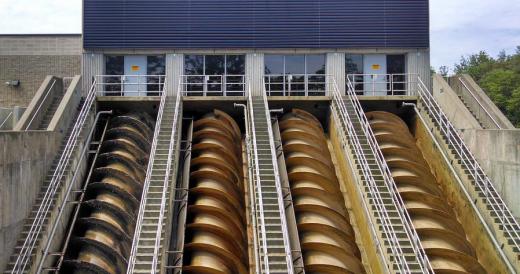A screw pump is a mechanical device that is designed to displace various substances from one place to another. There are many different variations, most with very specific purposes. Among other uses, screw pumps can be found within engines, used to drill for liquids such as oil, as augers, and more.
The Archimedes’ Screw, which was invented in the 3rd century BC by its namesake, is a basic type of screw pump. It consists of a screw that is encased by a hollow tube. One end of this device can be put into a liquid, such as water, and when it is turned, the motion of the screw pump causes the liquid to travel up the tube until it comes out of the other end. The edges of the screw do not necessarily need to make contact with the tube, and the device can be rotated either by hand or some form of machinery, such as a watermill or an electric turbine.

More complex variations of the screw pump also exist. For example, some employ two or more screws that work in unison within a casing for the displacement of a substance. The combination of screw threads rest against one another, and as they turn, they move liquids through the device at high speeds. A common place to find this variation is in the power transmission system of a submarine. Here, the screw pump can deliver fluid with little noise and can be used under the high pressures that are associated with being underwater.

Screw vacuum pumps are used to displace air at high pressures, and they utilize the physics of a screw pump to do so. Within the pump lies a system similar to an Archimedes’ Screw, which pumps liquid and displaces air as a result, creating a vacuum that can be used for many different purposes. There are also dry screw vacuum pumps that do the same thing without the internal liquid. These pumps have many different uses, including moisture and gas removal from a sealed space, creating a vacuum within various objects such as neon lights, and also can be used to supply the necessary suction to a pneumatic machine.
Augers, such as post augers, can be constructed as a variation of screw pump. These devices are used to displace dirt rather that liquid and are used for digging precise cylindrical holes into the ground. The motion of the device makes it easy to dig into the ground with simple rotation.
